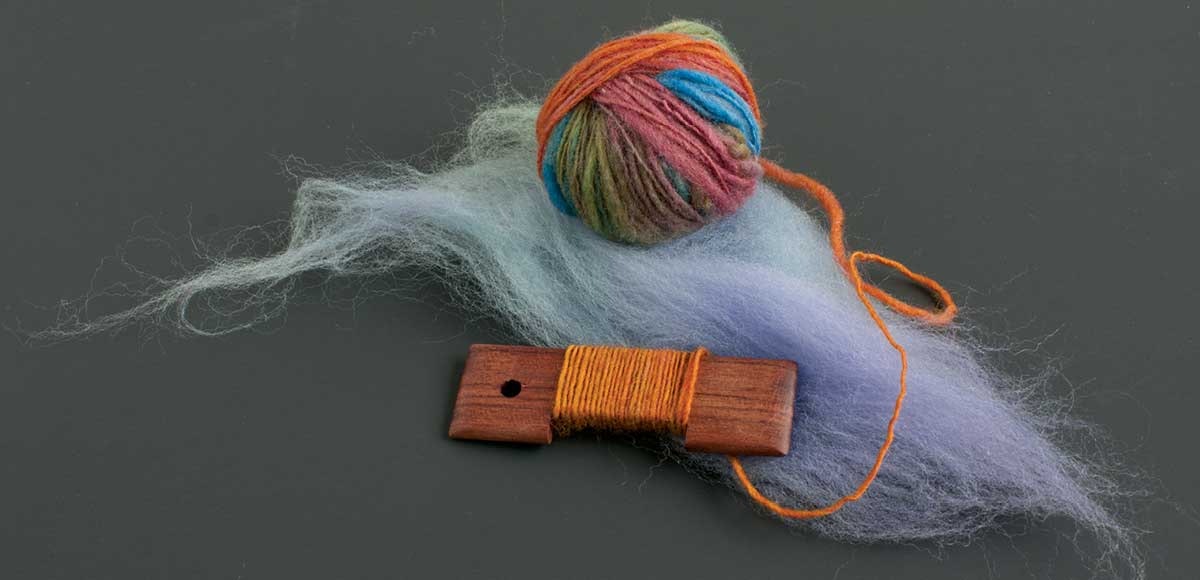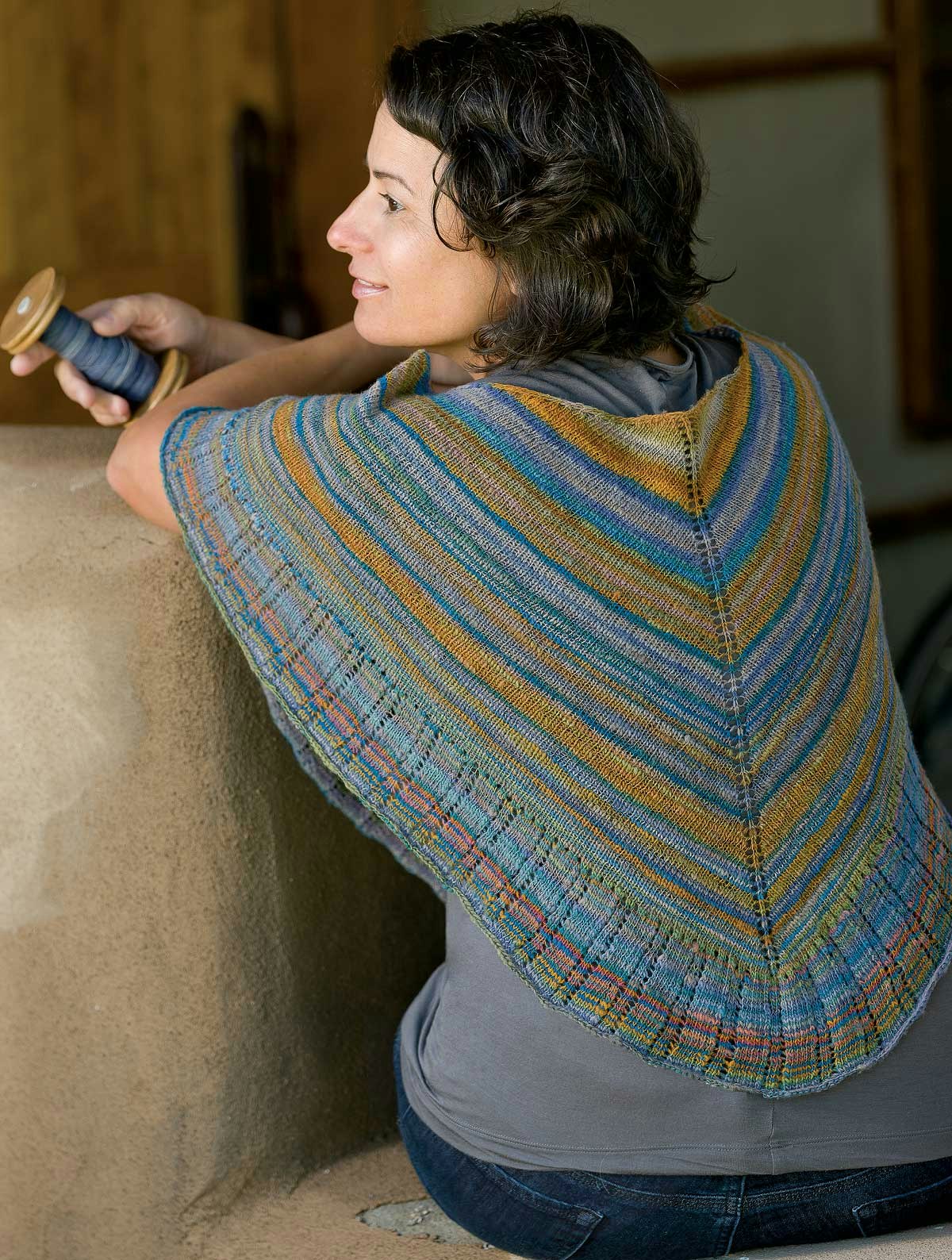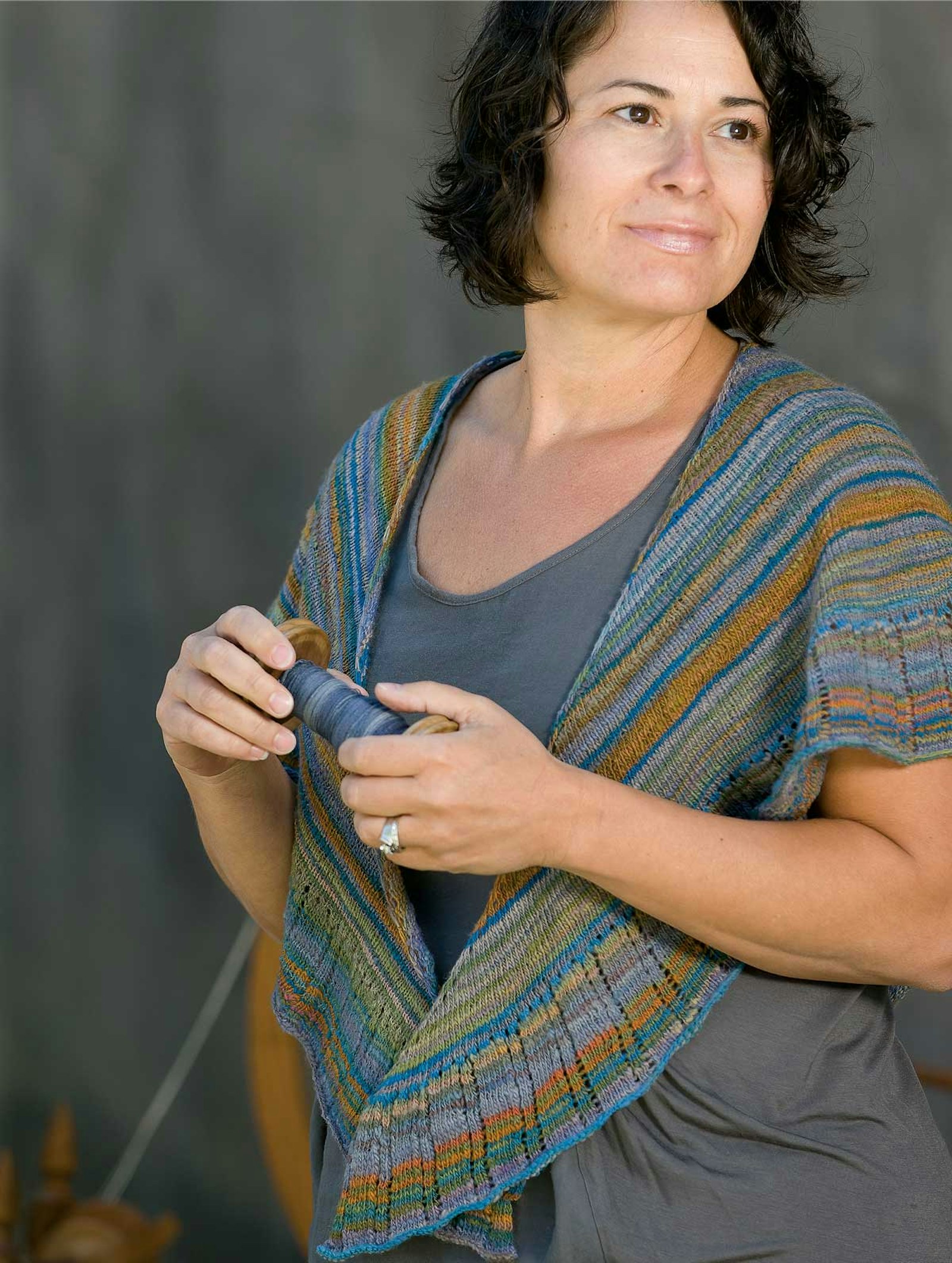Subscriber Exclusive
A Gift from Laurel: My First Handspun Shawl
In the Fall 2012 issue of Spin Off, Joanna Johnson shared a simple, quick knit and the story of a special gift from her then ten-year-old daughter.
In the Fall 2012 issue of Spin Off, Joanna Johnson shared a simple, quick knit and the story of a special gift from her then ten-year-old daughter. <a href="https://spinoffmagazine.com/a-gift-from-laurel-my-first-handspun-shawl/">Continue reading.</a>
https://spinoffmagazine.com/cdn-cgi/image/format=auto/https://www.datocms-assets.com/75073/1656686852-gift-from-laurel-2.jpg?auto=format&w=900
As the mother of three young children, I am very accustomed to being a giver. It is what I do. The occasional gifts I receive from my children are things such as dandelion bouquets, fruits and veggies from our garden, and handmade poems, stories, and drawings.
This year, however, I received a very special gift from our ten-year-old daughter, Laurel. It was the gift of spinning. For two years she had been asking me to teach her how to spin. The problem was I didn’t know how. I had already taught her the very basics of how to knit and crochet, how to embroider and quilt, but spinning was not in my repertoire. I am a prolific knitter and just didn’t think I had time or space in my life for any other yarn-related activities.

Joanna spun a laceweight singles at 2,500 yards per pound for her shawl from a handpainted top in the Zumba colorway from Enchanted Knoll Farm.
SUBSCRIBER EXCLUSIVE
As the mother of three young children, I am very accustomed to being a giver. It is what I do. The occasional gifts I receive from my children are things such as dandelion bouquets, fruits and veggies from our garden, and handmade poems, stories, and drawings.
This year, however, I received a very special gift from our ten-year-old daughter, Laurel. It was the gift of spinning. For two years she had been asking me to teach her how to spin. The problem was I didn’t know how. I had already taught her the very basics of how to knit and crochet, how to embroider and quilt, but spinning was not in my repertoire. I am a prolific knitter and just didn’t think I had time or space in my life for any other yarn-related activities.

Joanna spun a laceweight singles at 2,500 yards per pound for her shawl from a handpainted top in the Zumba colorway from Enchanted Knoll Farm.
[PAYWALL]
Somewhat reluctantly, I shared with a few spinning friends that I was in the market for a wheel so I could attempt to get her started. Within one week, I received an email from a friend of a friend looking to part ways with her wheel. She was turning her craft space into a writing studio and no longer had room for her wheel. Not only that, but she insisted on giving the wheel to us, as long as we promised to use and enjoy it. I picked it up that very night. I then proceeded to gently nag the spinners I know to come over and teach me how to spin. They all told me something along the lines of, “Just start playing with it—you will figure it out as you go.” With great skepticism, I did. I had some undyed combed top that I had purchased at a fiber fair, and Laurel and I started learning together, side by side, on winter evenings. Our yarn became finer, less lumpy, and more consistent as we played away on the wheel. We were mesmerized. Smitten.
Life slows down a bit at our house when we sit at the wheel. My husband sits across from me on the couch and we chat. The children read or play quietly nearby. And our three-year-old never fails to run to his bed to get his favorite stuffed kitty so they can stand guard and cheer us on. “You did it!” he shouts, as the fiber slowly turns into yarn. I’m enchanted. I will make time for this. Besides, according to Laurel, there is a practical advantage to this new skill. “Mom, now that you can spin, you don’t need to waste money buying all of that yarn!” Somehow, I am convinced that this is a much deeper and more expensive craft than knitting, but that’s just fine by me. It’s worth it.

Spinning
For this shawl, I started with hand-dyed, commercially combed Merino fiber. I simply divided the fiber into narrower lengths before spinning, using American long draw to draft.
This is a very basic top-down shawl, which is increased by simple yarnovers and is suitable for a beginner knitter who knows how to knit, purl, yarnover, and knit two together.
Fiber 4 oz Zumba colorway of Lambkin Superwash Merino, from Enchanted Knoll Farm.
Yarn Singles; 800 yards; 2,500 yards per pound; 28–30 wraps per inch.
Needles U.S. size 3: 32" circular (cir). Adjust needle size if necessary to obtain the correct gauge.
Gauge 5½–6 sts and 10 rows = 1".
Notions Markers (m).
Finished measurements 18½" depth at center back; 92" from tip to tip.
Knitting
The shawl is worked back and forth on a cir needle.
CO 3 sts.
Begin by working the following setup rows:
Row 1 (RS): [K1, yo] twice, k1—5 sts.
Rows 2 and 4: Purl.
Row 3: [K1, yo] 4 times, k1—9 sts.
Row 5: [K1, yo] 2 times, k2, yo, pm, k1, yo, k2, [yo, k1] 2 times—15 sts.
Body
Begin working 2-row pattern, increasing to shape shawl as follows:
Row 1: (ws) Purl.
Row 2: [K1, yo] 2 times, knit to m, yo, sl m, k1 (center st), yo, k to last 2 sts, [yo, k1] 2 times—6 sts are increased on every other row.
Repeat this 2-row pattern a total of 62 times—393 sts.
Purl 1 row.
Increase row: K1, *yo, k2; repeat from * removing m as you go—589 sts.
Next row: P4, pm, purl across to last 5 sts, pm, p5.
Edge
Work hem in the Ploughed Acre lace pattern from Barbara Walker’s A Treasury of Knitting Patterns, Pittsville, Wisconsin: Schoolhouse Press, 1998, page 192. Reprinted with permission from Schoolhouse Press.
Ploughed Acre (multiple of 10 + 9 sts)
Row 1: K5, sl m, yo, k2tog, k4, ssk, yo, k2; rep from * to * to m, sl m, k4.
Row 2: Purl.
Repeat Rows 1–2 for 4" or until you run out of yarn.
Bind off loosely.
Finishing
Weave in ends. Soak the shawl in cool water with a no-rinse soap for 20 to 30 minutes, roll in towel to absorb excess water, and lay it flat to block, stretching it slightly as preferred.
Joanna Johnson lives in Colorado, and her work has been published in Knitty, Piecework, Jane Austen Knits, Spin Off, and Knitting Traditions magazines. She owns Slate Falls Press with her husband, Eric. Find out more about their books, including Little Women Knits, on their website, slatefallspressbooks.com.
This project was published in the Fall 2012 issue of Spin Off.



